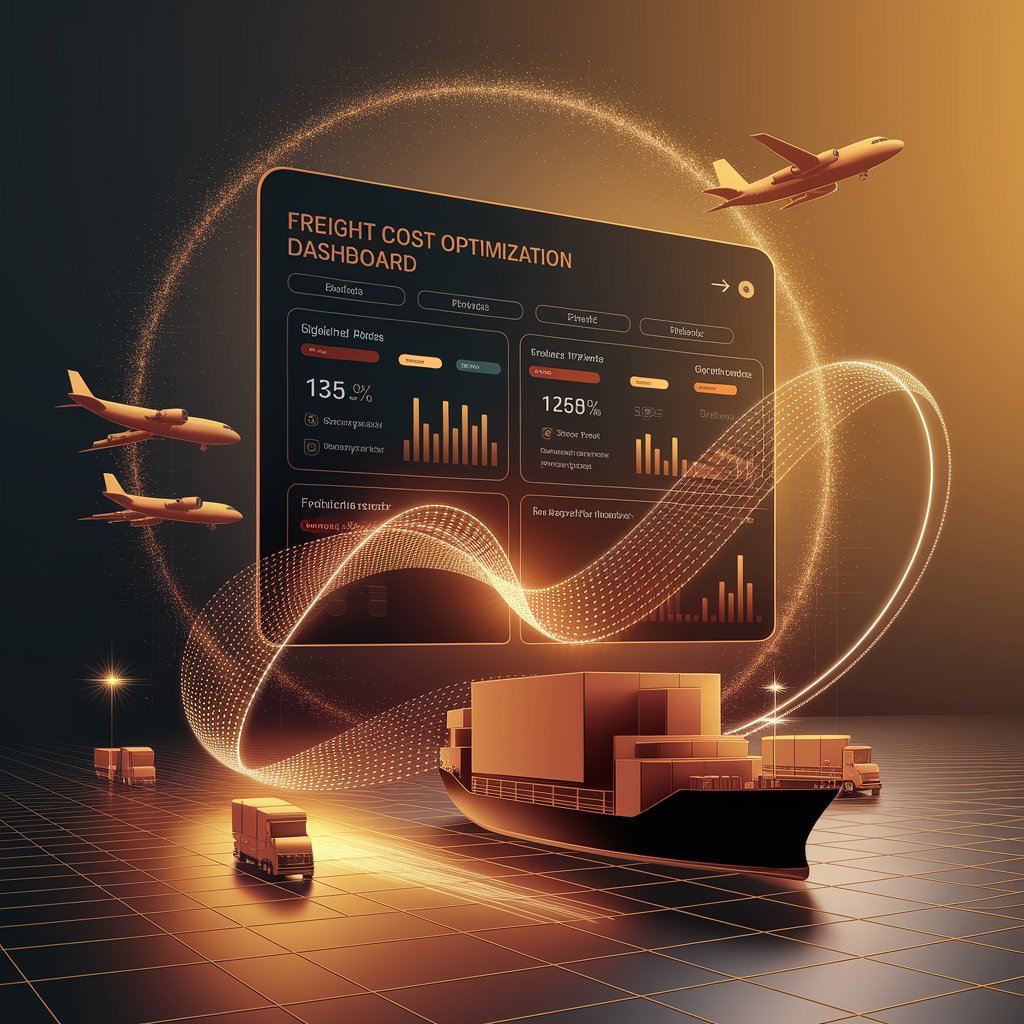Freight Cost Optimization: Maximizing Efficiency in Global Logistics

Introduction
This is where freight cost optimization plays a transformative role. By combining technology, data analytics, and automation, logistics companies can minimize expenses, improve efficiency, and deliver more competitive rates to their clients.
What Is Freight Cost Optimization?
Freight cost optimization is the strategic process of reducing transportation costs while maintaining or improving service quality. It involves analyzing routes, modes, contracts, and operational workflows to identify inefficiencies and unlock savings.
With modern digital tools and AI, cost optimization has shifted from reactive cost-cutting to proactive, data-driven strategies that deliver long-term value.

Key Features of Freight Cost Optimization
- Route Optimization: Selecting the most cost-effective paths for shipments.
- Mode Selection: Balancing air, ocean, road, and rail for efficiency and cost.
- Rate Benchmarking: Comparing carrier rates and market trends in real time.
- Load Consolidation: Maximizing container or truck capacity to reduce empty space.
- Automated Auditing: Detecting overcharges, billing errors, or hidden fees.
Benefits for Logistics Providers
- Cost Savings: Lower fuel, labor, and carrier expenses.
- Improved Margins: Boost profitability without raising prices.
- Efficiency Gains: Reduce transit times and operational waste.
- Customer Competitiveness: Offer better rates and win more business.
- Sustainability: Cut emissions by optimizing routes and load utilization.

Real-World Applications
- Freight Forwarders: Use AI to compare and negotiate carrier rates.
- Carriers: Optimize fleet scheduling to reduce idle time.
- 3PL Providers: Deliver cost transparency and savings insights to clients.
- Retail and E-commerce: Lower shipping costs for high-volume deliveries.
The Future of Freight Cost Optimization
The future of freight cost optimization will be powered by AI, blockchain, and predictive analytics. AI will forecast market price shifts and suggest proactive changes, blockchain will ensure transparent contracts, and predictive models will identify risks before they impact costs. Over time, optimization will evolve into self-adjusting freight networks that adapt automatically to global conditions.

Conclusion
Freight cost optimization is no longer about short-term savings—it’s about building sustainable, efficient, and competitive logistics operations. By leveraging technology to optimize routes, contracts, and load utilization, logistics providers can reduce expenses while improving service quality. For companies seeking profitability and resilience in global trade, cost optimization is the strategic foundation for long-term success.
